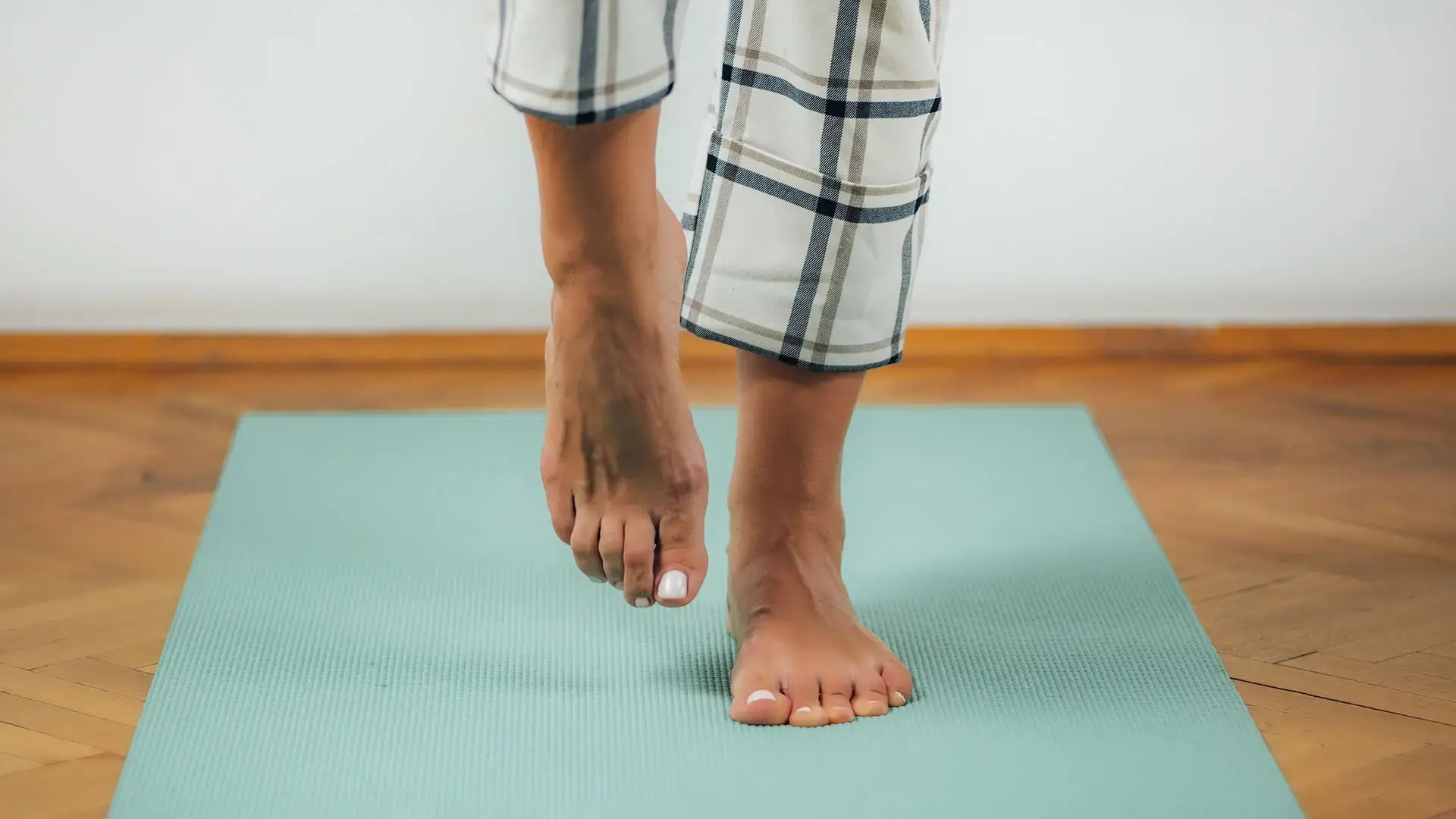Tripping over your own feet or feeling a tingling sensation can happen from time to time. However, if such symptoms happen frequently, it may be warning signs of foot drop. Foot drop, or dropped foot syndrome, is characterized by difficulty lifting the front part of the foot, leading to a dragging sensation or an inability to walk properly. It often goes unnoticed until it significantly impacts one's daily life, and, unfortunately, the condition does not resolve on its own. For this reason, understanding the early warning signs is crucial for timely intervention and effective treatment.
How Do I Know If I Have Foot Drop?
If you've noticed any of the following warning signs, it's essential to consult with a specialist promptly:
- Tripping or stumbling frequently: If you find yourself tripping over your own feet or stumbling more than usual, it could be an early indication of foot drop.
- Difficulty lifting the foot: Struggling to lift the front part of your foot, especially when walking, is a common sign of foot drop.
- Dragging sensation: A feeling of dragging your foot or leg, as if it's not fully under your control, is another potential warning sign.
- Numbness or tingling: Sensations of numbness or tingling in the affected foot may be indicative of nerve-related issues contributing to foot drop.
- Muscle weakness: Weakness in the muscles of the leg, particularly the shin and ankle, can be an indication of foot drop.
Other warning signs of foot drop include:
Bringing any new or worsening foot-dragging, tripping, or gait abnormalities to your doctor's attention is important for proper diagnosis and treatment. Other warning signs may include:
- Difficulty standing on your toes or heels. Your foot may flop downward.
- Your foot turns outward when walking due to weakness of the anterior tibialis muscle that lifts the foot.
- Clumsiness and stumbling due to instability when walking.
- Leg and foot fatigue after walking short distances.
- Atrophy of the calf and foot muscles over time from disuse.
- Reduced reflexes in the ankle.
- Bowing inward of the ankle when trying to lift the front of the foot.
- A slapping sound when the dropped foot hits the floor while walking.
- Instability and tendency to twist the ankle due to foot drop.
- Cramping or spasticity in the calf muscles.
- Numbness and tingling extending from the calf down to the foot.
Not Sure If You Have Dropped Foot Syndrome? Ask Yourself
Some of the early signs of foot drop are not alarming or strange occurrences. As such, it can be difficult to ascertain whether it is a harmless event or symptom of the condition. Ask yourself the following questions:
- When walking, does your foot slap or flop down onto the floor more than it used to?
- Do you feel like you have to lift your leg higher to avoid tripping or your foot dragging?
- Do you find your toes catching on the ground or carpet more often lately?
- Do you have numbness, tingling, or reduced sensation on the outer side of your shin or top of your foot?
- Have you noticed new clumsiness, instability, or fatigue in your affected leg and foot when walking?
- Have you noticed any new weakness in lifting your foot and toes upward or standing on your heels?
- Does your foot drag or scuff along the floor unless you consciously lift it higher when walking?
- Do you have any new cramps, spasms, or stiffness in your calf or foot when walking?
- Have you noticed signs of new muscle wasting or atrophy in your lower leg or foot?
- Do you feel like your ankle is less stable and want to roll more easily?
- Have you had any recent injury or back problems that could affect nerves related to foot lifting?
- Have you noticed a change in gait or signs of foot drop that seem to have started slowly?
If you answered 'yes' to any of these questions, it is important to speak with a specialist about the possibility of foot drop. Fortunately, foot drop can often be treated and improved with the right interventions.
Why Do People Get Foot Drop?
Understanding the causes of foot drop is key to addressing the condition effectively. Causes include:
- Nerve injuries: Trauma or compression to the peroneal nerve can result in foot drop.
- Muscle disorders: Conditions affecting the muscles, such as muscular dystrophy, can contribute to dropped foot syndrome.
- Brain and spinal cord disorders: Diseases like multiple sclerosis or stroke can impact the nerves controlling foot movement.
Treatment Options for Foot Drop
Depending on the cause, severity of the condition, and other factors, there are different treatment options for dropped foot syndrome. These include:
- Implanted nerve stimulator - Electrical stimulation is applied to the nerve continuously through an implanted device.
- Botox injections - Can weaken or paralyze overactive calf muscles that contribute to foot drag. Usually temporary but repeated injections can provide ongoing relief.
- Tendon lengthening surgery - This involves lengthening contracted calf muscles or tendons in the foot to improve dorsiflexion flexibility and reduce foot drag.
- Tendon transfer surgery - A working tendon is detached and reattached to a new position to restore lost function. Often the tendon that raises the big toe is transferred to lift the foot.
- Nerve decompression surgery - Removing pressure on or freeing up a compressed nerve can help restore nerve function and improve foot drop symptoms.
- Nerve graft surgery - A nerve from another part of the body can be grafted to bridge a damaged section and restore nerve signaling ability.
- Bone fusion surgery - Fusing foot and ankle bones can provide stability and support if nerve damage is permanent.
Stride with Confidence: Selecting the Best Surgeon for Foot Drop Relief
Foot drop can significantly impact the quality of your life if left unchecked. In the early stages it can alter how you walk. In more advanced stages, it can significantly challenge your mobility, comfort, and quality of life. The expert plastic surgeons and specialists at The Institute for Advanced Reconstruction are among the most experienced in the country in treating conditions like foot drop. As pioneers in the most advanced nerve and tendon procedures, we treat complex conditions affecting all parts of the body with exceptional patient outcomes.
If you suspect that you or someone you know may have foot drop, or if you have been diagnosed with foot drop and have not experienced an improvement with your current treatment regimen, schedule a consultation at one of our advanced surgery centers today and take the first step toward improved mobility.


